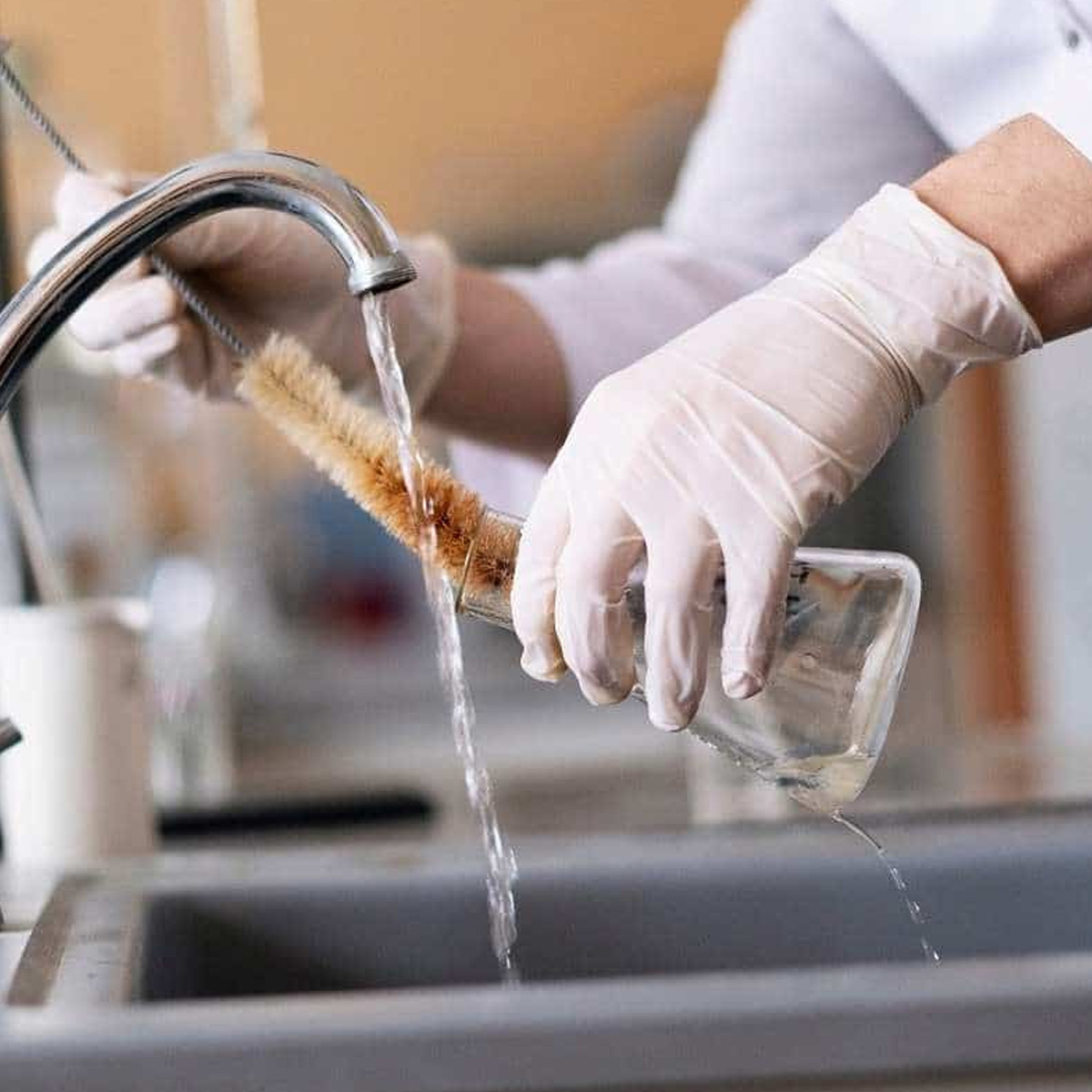
Cleaning is Critical, But the Agent Requires Occupational Exposure Control
The process of removing debris or foreign substances from an object, also known as cleaning, is a crucial part of many production, laboratory, medical, and educational protocols. Equipment used on production lines must be cleaned to prevent the build-up of dirt, residual product, or lubricating oils/grease on or within the manufacturing equipment and contamination of product batches. Regular cleaning helps keep equipment running smoothly to increase longevity. Cleaning may also serve as an important part of the manufacturing and production process itself. Many adhesives and lamination procedures require the surface to be clean from debris and dust prior to applying adhesive or starting lamination. For applications in which bacterial contamination is a concern, such as pharmaceutical manufacturing or medical procedures, regular cleaning can prevent biofilm formation by potentially removing some bacteria. Instruments and equipment used for these applications may also require subsequent disinfection.
Cleaning procedures vary considerably between applications and equipment. In the simplest cases, equipment is soaked in a cleaning agent and then rinsed. However, many cleaning procedures are more complex. They can require soaking with one or more cleaning agents, intensive scrubbing of parts with a brush, sponge or other cleaning tool, followed by one or more rinses. For some equipment or instruments, such as circuit boards, cleaning requires an ultrasonic cleaner. Ultrasonic cleaners use sound waves to create millions of microscopic bubbles within a liquid (water or cleaning agent). When these bubbles come in contact with parts or instruments submerged in the liquid, the bubbles burst or collapse, which dislodges debris on the parts or instruments. It has been estimated that the temperature of a single bubble that collapses during ultrasonic cleaning at 20-40 kHz is 20,000 K or four times hotter than the surface of our Sun!
Despite differences in procedures, every cleaning procedure will require a cleaning and/or rinsing agent. Many commercial cleaning and rinsing agents are non-hazardous and designed to be used in the open air with appropriate personal protective equipment. However, some parts or instruments, those made of metal in particular, may require the use of organic solvents that can release hazardous fumes and nuisance odors. The use of brushes can further aerosolize these cleaning agents and spread droplets over a large area. Similarly, ultrasonic cleaning heats the cleaning solution, which increases the release of vapors. While ultrasonic cleaning procedures generally recommend the use of non-hazardous solutions, some applications may require harsher chemicals. Operators should always check with the manufacturer to determine if a particular cleaning solution is safe for use in the ultrasonic cleaner and flammable cleaning solutions such as alcohols should not be used. In addition to the use of personal protective equipment, operators can protect themselves from hazardous or odorous cleaning and rinsing agents by completing cleaning and rinsing procedures for smaller components in a fume hood. A ductless fume hood with a horizontal laminar flow that draws air from near the operator, across the work space, to the back of the hood can help protect the operator and others in the area from cleaning and rinsing agent fumes. The fume hood should be fitted with the appropriate filter to capture residual vapors from the contaminated hood air prior to air exhaust into the room or environment. A ducted vertical flow hood that pulls HEPA filtered air from the top of the hood, down to the work surface and back up through ductwork may also be appropriate. Similar to a ductless system, contaminated air should be filtered or scrubbed prior to air exhaust into the environment. The HEPA filtered incoming air in ducted vertical flow hoods provides the added benefit of protecting the cleaned and rinsed parts or instruments from dust and other airborne particles. For this reason, completion of cleaning and rinsing procedures that use non-hazardous, non-odorous cleaning and rinsing agents may still benefit from the use of a hood to protect the cleaned parts or instruments. These applications would not be restricted to the use of a ducted vertical flow hood and instead could be completed in a ductless vertical flow hood in which air is drawn through a HEPA filter into the top of the hood, onto the work surface, and is then released toward the operator. Ductless vertical flow hoods that exhaust air toward the operator should only be used for non-hazardous applications in which fumes and vapors pose no risk to the operator’s health or wellbeing.